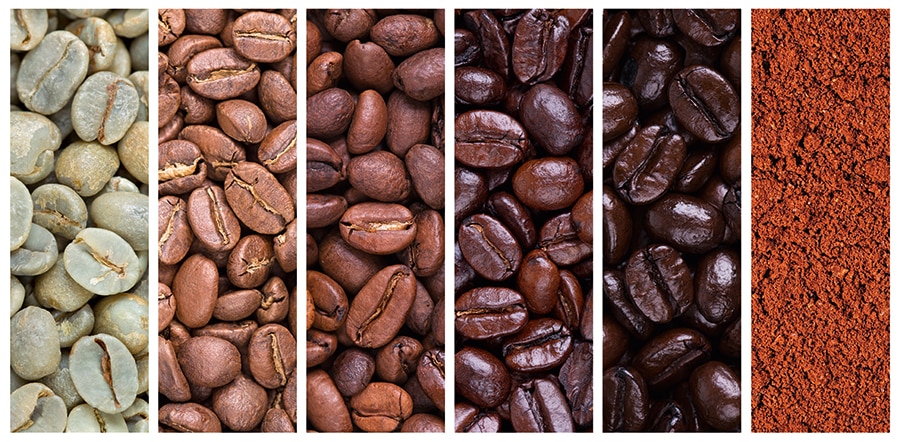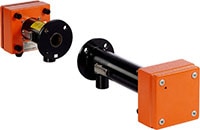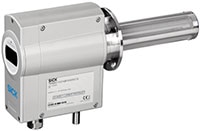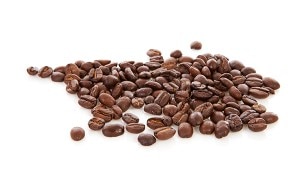The GM901 gas analyzer monitors carbon monoxide during the roasting process, thus preventing potential explosions which could be caused by high concentrations of gas in the roaster. And thanks to laser technology, it is possible to measure oxygen quickly and accurately on the packaging machine itself - the proof is in the pudding, or the coffee in this case.  When roasting, maximum concentration is required. With industrial roasting processes, the temperatures vary between 200 and 280 °C depending on the product, degree of roasting, and desired roasting color. When the coffee beans are dried during the roasting process, CO2 and CO are given off alongside water and oils. As the roasting process continues, particularly with batch roasters, the CO concentration can increase so sharply that there could be a risk of deflagration or even an explosion, which could destroy the roaster beyond repair. To avoid this, using dynamic measurement to track the CO concentration is recommended. This will mean that the roasting process can be stopped in good time.
When roasting, maximum concentration is required. With industrial roasting processes, the temperatures vary between 200 and 280 °C depending on the product, degree of roasting, and desired roasting color. When the coffee beans are dried during the roasting process, CO2 and CO are given off alongside water and oils. As the roasting process continues, particularly with batch roasters, the CO concentration can increase so sharply that there could be a risk of deflagration or even an explosion, which could destroy the roaster beyond repair. To avoid this, using dynamic measurement to track the CO concentration is recommended. This will mean that the roasting process can be stopped in good time.

The GM901 gas analyzer measures carbon monoxide optoelectronically and calculates the CO concentration in mg/m 3 or ppm. A purge air unit protects the optical interfaces on the sender and receiver unit from dust and dirt. The short response times that result from the quick in-situ measurement and the minimal maintenance requirements make the GM901 gas analyzer the obvious choice. And with this type of measurement, the product has really proven itself when it comes to protecting people and roasting equipment, reducing production downtime, and monitoring the roasting process - and, of course, the product quality.
The aroma must stay in the packaging
It is important to remember that the taste also depends on the packaging. Oxygen must be removed from the coffee packaging as the taste will inevitably be lost if the oxygen content is too high. The TRANSIC111LP laser oxygen transmitter from SICK  makes light work of this inertization process thanks to its quick and accurate laser oxygen measurement capabilities. It measures the oxygen content directly on the packaging machine and nitrogen is added as an inert gas. Nitrogen is expensive. Adjusting the system manually with inaccurate measurements is very inefficient and costly. Ideally, the process should be monitored so that it can be controlled appropriately. This can only be done when the oxygen measurement process provides quick and accurate results.
makes light work of this inertization process thanks to its quick and accurate laser oxygen measurement capabilities. It measures the oxygen content directly on the packaging machine and nitrogen is added as an inert gas. Nitrogen is expensive. Adjusting the system manually with inaccurate measurements is very inefficient and costly. Ideally, the process should be monitored so that it can be controlled appropriately. This can only be done when the oxygen measurement process provides quick and accurate results.  Compared to electrochemical measurement cells, the TRANSIC111LP with laser technology performs outstandingly well. The rugged laser oxygen transmitter is easy to integrate. The O2 is measured accurately without noticeable time delays, errors, or alarms. The rapid measured value display ensures the nitrogen is controlled reliably, automatically, and without the need for any additional manual interruptions, whereas the process of measuring with the electrochemical cell had to be given much more attention. With the TRANSIC111LP from SICK, nitrogen can be saved and maintenance costs will be lower. The transmitter is nonwearing, does not have any mechanical parts, and functions without consumables. In addition, it features outstanding tightness, meaning that incorrect measurements can be avoided - much to the astonishment of the operating personnel, who have had very different experiences in the past with electrochemical cells.
Compared to electrochemical measurement cells, the TRANSIC111LP with laser technology performs outstandingly well. The rugged laser oxygen transmitter is easy to integrate. The O2 is measured accurately without noticeable time delays, errors, or alarms. The rapid measured value display ensures the nitrogen is controlled reliably, automatically, and without the need for any additional manual interruptions, whereas the process of measuring with the electrochemical cell had to be given much more attention. With the TRANSIC111LP from SICK, nitrogen can be saved and maintenance costs will be lower. The transmitter is nonwearing, does not have any mechanical parts, and functions without consumables. In addition, it features outstanding tightness, meaning that incorrect measurements can be avoided - much to the astonishment of the operating personnel, who have had very different experiences in the past with electrochemical cells.
Laser measurement of oxygen with TRANSIC100LP from SICK
- Product information: GM901 gas analyzer, TRANSIC111LP laser oxygen transmitter
- Product portfolio: Gas analyzers

